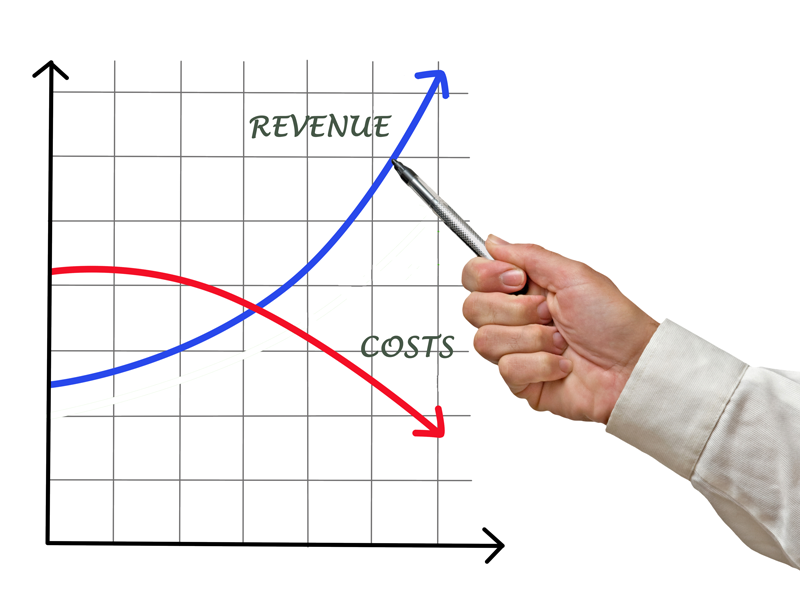
In today’s increasingly competitive marketplace automation has to be viewed as a long term strategy worth investing in. Some companies can baulk at the initial, or staggered, costs involved in moving from manual processes into automated procedures.
Yet to do so would miss the point and one of the main benefits that automation offers. The key to evolving into automated manufacturing is found in the short-to-long-term cost cutting it produces. Simply put this means the longer automation is used within production, the more powerful its ability to reduce costs becomes. Not only will it lower manufacturing overheads but increase output at the same time, a fact that many businesses are looking to take advantage of. But how is that possible and why does automation enable a factory to reduce production costs?
Improved Accuracy
While the long-term financial returns on automating particular processes will continue to increase, there are many quick ROI’s to be found too. Products can immediately be manufactured with the exact same specifications, with far lower tolerances, creating a far more consistent product.
Part cycle time also decreases and will naturally create a more efficient production line. Automated machines or robots have no need to take breaks like regular staff, therefore working at a faster rate and manufacturing more products within the same space of time. This extends further into the size of the machines which will create a smaller footprint than manual processes, allowing cubic space to be utilised more effectively.
Working With Humans
Automated technology continues to improve year-on-year and as such, so does its ability to work collaboratively with the human workforce. Sensor systems have become far more adept and built with safety in mind, and features such as collaborative robots that can detect too much resistance to their movement so they automatically shut down. The positive effect here is a safer workplace for employees, and a far lower risk of accidents occurring which can lead to costly lay-offs or even compensation claims.
Enhanced Data Capture
The data captured during manufacturing provides not only an invaluable insight into improving best practices but also to maximise efficiency and control over machine usage. Precise detail about wastage, energy consumption and Overall Equipment Effectiveness (OEE) can be analysed and used to constantly improve the production process.
Over time this will build a pattern of data that will produce predictive capabilities for factories to understand where and when machines may break down, minimise wastage and significantly lower energy costs. Rather than averaging these elements out across multiples lines produced within the same facility, the exact data for each product can be captured and analysed. This will allow companies to pinpoint definitive costs for every line produced in their factories.
Lower Labour Costs
As is the case in many specialised trades, manufacturers are finding it increasingly difficult to recruit skilled workers. A generation or two ago the sector was seen as offering a stable career, but with school leavers given access to an increasing range of educational courses, many young people are opting for office-based roles.
In order to keep pace with growing consumer demand, the skill gap can be filled with the use of bespoke automation. One machine can perform the tasks of several workers and with none of the typical staff benefits required, the cost remains sustainably low and can therefore be projected over a longer period of time.
Efficient Production Lines
If a strong enough business case cannot be made to invest in automated machinery that can take on several duties, there are still alternatives available. A production line can operate more efficiently if existing machines are linked together through the installation of automated processes. This can be applied to older machines that can be retrofitted with new technology or connected via robots and conveyer systems.
The transfer time between machines will be shortened, creating faster throughput and overall improved manufacturing efficiency. Labour costs will also be reduced, and the overall unit cost per item will become cheaper, increasing profits and opening new investment opportunities.
Bespoke Automation
Specialised machines built to perform specific tasks have always existed in one form or another. While they offer many advantages, one of the biggest draw backs is how isolated they become from the overall manufacturing process. Automated machines that are designed to perform bespoke duties can not only do so at a faster rate, but can, if required, take on additional processes.
Alternatively, it is much easier to program an automated machine to work in conjunction with other areas of the production line. This gives you all the advantages of utilising a bespoke system without the concerns of slowing down manufacturing throughput.
Conclusion
Lowering costs is one of the main advantages of automation investment, a factor that a growing number of factories are taking into consideration across the globe. Automation provides the answers to a number of manufacturing issues, while delivering tangible results on the bottom line. Delivering the best possible experience for your customers starts in production and this exciting technology allows you to find that all important competitive edge.
If you would like to find out how automated palletising systems could help you reduce your production costs, contact us on 01223 499488 or helpline@granta-automation.co.uk and we will be very happy to discuss this with you.
Alternatively, download our Automation Project Payback Calculator to find out what your cost savings would be after automating your processes.








Warning: Undefined variable $aria_req in /var/www/granta-automation.co.uk/news/wp-content/themes/twentyten/comments.php on line 81
Warning: Undefined variable $aria_req in /var/www/granta-automation.co.uk/news/wp-content/themes/twentyten/comments.php on line 86